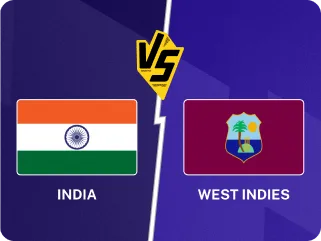
India thrashed England at Edgbaston to register their biggest Test win away from home in terms of runs. Here are the five main takeaways from the second England-India Test.
Shubman Gill shows why he was the chosen one
When Shubman Gill was appointed India’s Test captain, his career average sat at 35.05. Outside Asia, it read just 25.40. Two games into his tenure, he’s lifted those numbers to 42.72 and 44 respectively, a staggering leap powered by epic knocks at Headingley and Edgbaston. While on one hand he always seemed destined for the role, on the other, there were question marks over his appointment given his lack of consistent performances. If his Headingley hundred silenced critics, his two Edgbaston epics would have turned them into lifelong fans.
The pitch was on the flatter side and a lot of runs were scored very quickly. Yet, Gill towered above all, breaking and threatening age-old batting records of Test cricket. Tougher assignments will come soon, perhaps as early as next week at Lord's. But at his spiritual home of No.4, which is more of a throne than a batting position in Indian cricket, Gill proved at Edgbaston why he was the chosen one.
Jamie Smith is the Test cricketer England hoped Jos Buttler could be
Jamie Smith walked out to face a hat-trick ball in the first innings with England in dire straits. From there, he launched a stunning counter-attack with Harry Brook, adding 303 runs in 304 balls, himself finishing unbeaten on 184 off 207, the highest score by an England wicketkeeper in Tests. Even in the second innings, Smith smashed 88 off 99, tackling India's seamers and spinners with ease. From 12 Test matches so far, Smith averages 58.64 with the bat, while striking at 76.81. No wicketkeeper in Test history has scored more runs than his 997 at a higher average.
It's expected for that number to fall, but Smith has shown enough promise in his young Test career so far for England to believe he's the real deal. Jos Buttler is a white-ball legend, but wasn't able to replicate that kind of success at the Test level despite being given an extended run. He ended up making only two hundreds and averaging 31.94 from 57 Tests. Smith already has as many tons as Buttler and his white-ball skills were on full display at Edgbaston, where he hit eight sixes across the two innings, playing with the kind of fearless ease England hoped Buttler would bring to Tests. If he can maintain this level of output on a consistent basis, the sky could be the limit for Jamie Smith.
England might need to rethink Ben Stokes' role with the bat
Since the start of 2024, Ben Stokes has averaged 26.80 with the bat, crossing 50 only five times out of 28. At Edgbaston, he made his first ever golden duck in Test cricket in the first innings, and was out for 33 in the second. After Joe Root, Stokes has the second-lowest strike rate among England's top seven batters since 2024 as well. He is neither scoring enough runs, nor playing quick, momentum-shifting cameos that one would expect from someone of his abilities. With the ball, however, Stokes has looked arguably the most threatening of the England quicks this series, taking six wickets at 35.50.
With the ascension of Smith and the presence of a spin all-rounder option in Jacob Bethell in the squad, perhaps it's time for England to have a conversation around Stokes' role in the side. A move down from six to seven could give him a bit more cushion and Smith a bit more responsibility (which he seems ready to take), also allowing him more freedom to express himself. The other option would be to bring in Bethell at seven, replacing Shoaib Bashir, and push Stokes more into a bowling all-rounder role at eight, which is where he started off in Test cricket.
India have enough seam depth to win without Bumrah
Obituaries for India's seam attack had been written after Headingley, where they looked far from incisive despite having Jasprit Bumrah in the playing XI. At Edgbaston, they bounced back. Mohammed Siraj activated his main character syndrome in Bumrah's absence, delivering a spell for the ages on a flat first-innings deck. While he was impressive in his own right, it was Akash Deep who stole the show, giving a masterclass of how and where to bowl on such tracks.
Also read: India have to be prepared for their fast-bowling transition to get worse before it gets better
In the first innings, India had a small window with the second new-ball after the mammoth Smith-Brook partnership to prevent England from getting close to their total. Both Siraj and Akash Deep were bang on the money, taking out the last five wickets for 20 runs. In the second innings, Akash Deep became the first India quick to bowl out three of the opposition top four in Test cricket. Together, the two seamers took 17 wickets at 18.47 at Edgbaston where the England fast bowlers conceded 69.33 runs per wicket, proving that the India seam attack might not just be Boom or bust. This is a crucial development as it will allow India to feel more at peace with managing Bumrah’s workload in the future.
With Gill's confirmation that Bumrah will play the Lord's Test, a pace trio of Bumrah, Siraj, and Akash Deep on what is expected to be a livelier surface looks like a daunting prospect for England.
Bazball's need for flat pitches is hurting their bowlers
Pitches for Test matches in England have become considerably flatter over the last three years under the Bazball regime, allowing their batters to trust the pace and bounce and play their shots. While it has provided results for England at home, the flatness of surfaces like the one on offer at Edgbaston have also proved to be a problem for their fast bowlers when up against strong batting lineups. India have scored more than 350 runs in all four innings in this series so far with the England quicks averaging 33.63 (Josh Tongue), 35.50 (Stokes), 52.50 (Brydon Carse), and 96.66 (Chris Woakes). Even Shoaib Bashir has got minimal help, managing to pick up eight wickets at 59.50, majority of which have come in the form of batters miscuing big hits and skying catches to fielders in the deep.
England's quick batting tempo also doesn't allow their bowlers enough rest if the opponents bat big, as India have done so far and can be expected to do on such pitches. On the other hand, greener surfaces would risk reducing the efficiency of England's batters and increasing the threat of India's already threatening bowlers.
Stokes didn't seem pleased with how the Edgbaston pitch turned out to be. "As the game got deeper and deeper, it sort of turned into a wicket (that) probably suited India more than us, to be honest," he said at the post-match presentation. It's hard to gauge what would be a good pitch from England's point of view now that they are up against an opponent that has the pedigree to out-bat and out-bowl them on flat surfaces. They will have to figure that out quickly and give their bowlers something to work with so that they are not ground into dust.
Follow Wisden for all England vs India Test series updates, including live scores, latest news, team lineups, schedule and more. The live streaming details for the ENG vs IND series in India, UK, USA and rest of the world can be found here. For Wisden quizzes, head here.








